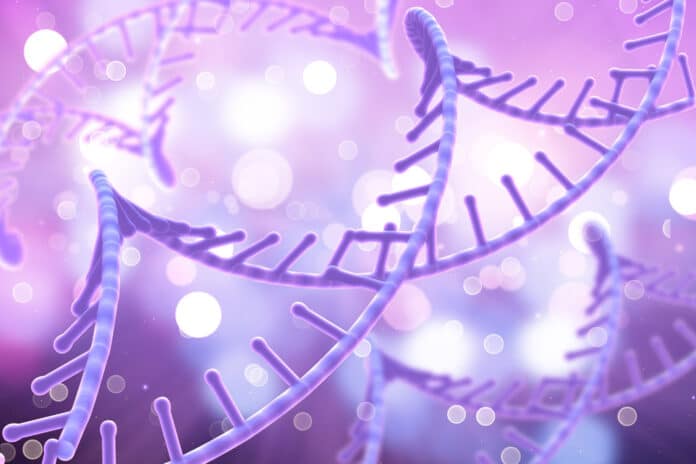The compaction and organization of genomic DNA is a central mechanism in eukaryotic cells, but engineered architectural control over double-stranded DNA (dsDNA) is notably challenging. Aarhus University researchers have created a ground-breaking new triplex origami technique that manipulates the tight packing and shape of DNA.
DNA frequently consists of two strands twisted into a double helix in the natural world. The genes that encode human features are found on one strand, and the other strand serves as a backup. The bonds that hold these two strands together are known as Watson-Crick interactions, enabling them to recognize and bind to one another. There is a different kind of interaction between DNA strands in addition to these well-known ones. A third strand can connect to form a stunning triple helical structure called a triplex thanks to these so-called normal or reverse Hoogsteen interactions.
Scientists introduced a new technique for organizing DNA strands in this new study. Their method is based on the aforementioned Hoogsteen interactions.
Scientists found that- using this method, DNA can be bent or “folded” in a way that creates compact structures. These structures can take on a variety of shapes, ranging from thick three-dimensional constructs to hollow two-dimensional shapes and everything in between. It’s possible to build things that resemble potted flowers.
It is possible to obtain unprecedented control over the shape of DNA molecules using triplex origami. This could open new pathways for research. The research demonstrates that DNA is shielded from enzymatic destruction by triplex creation. Therefore, the ability to compress and protect DNA using the triplex origami technique could be highly significant in gene therapy, which involves restoring health in damaged cells by providing them with a function they are deficient in via a DNA package.
Professor Kurt V. Gothelf said, “The amazing biological properties of DNA’s sequence and structure have already been utilized in nanotechnology, which has impacted medical treatments, diagnostics, and many other areas. For the past four decades, DNA nanotechnology has relied almost exclusively on Watson-Crick base interactions to assemble single-stranded DNA and organize them into custom nanostructures.”
“We now know that Hoogsteen interactions have the same potential to organize double-stranded DNA, which presents a significant conceptual expansion for the field.”
Journal Reference:
- Cindy Ng, Anirban Samanta, Ole Aalund Mandrup, Emily Tsang, Sarah Youssef,Lasse Hyldgaard Klausen, Mingdong Dong, Minke A.D. Nijenhuis & Kurt V. Gothelf. Folding Double-Stranded DNA into Designed Shapes with Triplex-Forming Oligonucleotides. Advanced Materials. DOI: 10.1002/adma.202302497
